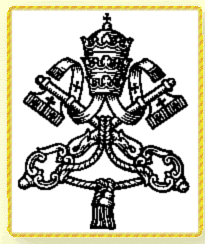There are a few sections which I would like to highlight here. My comments are in red.
The Liturgical Judgment
127. The question asked by this judgment may be stated as follows: Is this composition capable of meeting the structural and textual requirements set forth by the liturgical books for this particular rite? Hmmm, good thought which I think many musicians fail to consider.
128. Structural considerations depend on the demands of the rite itself to guide the choice of parts to be sung, taking into account the principle of progressive solemnity (see nos. 110ff. in this document). A certain balance among the various elements of the Liturgy should be sought, so that less important elements do not overshadow more important ones. Textual elements include the ability of a musical setting to support the liturgical text and to convey meaning faithful to the teaching of the Church.129. A brief introduction to the aspects of music and the various liturgical rites is
provided below in nos. 137ff. Pastoral musicians should develop a working familiarity with the requirements of each rite through a study of the liturgical books themselves. Liturgical knowledge is another area where many liturgical musicians are lacking. It is great to me a master musician, but that it hardly enough.[...]
The Musical Judgment
134. The musical judgment asks whether this composition has the necessary aesthetic qualities that can bear the weight of the mysteries celebrated in the Liturgy. It asks the question: Is this composition technically, aesthetically, and expressively worthy? Just think of "I Myself am the Bread of Life", or "If I Was a Butterfly"135. This judgment requires musical competence. Only artistically sound music will be effective and endure over time. To admit to the Liturgy the cheap, the trite, or the musical cliché often found in secular popular songs is to cheapen the Liturgy, to expose it to ridicule, and to invite failure. Hahahaha! There goes how many songs in the hymnals.
136. Sufficiency of artistic expression, however, is not the same as musical style, for “the Church has not adopted any particular style of art as her own. She has admitted styles from every period, in keeping with the natural characteristics and conditions of peoples and the needs of the various rites.”104 Thus, in recent times, the Church has consistently recognized and freely welcomed the use of various styles of music as an aid to liturgical worship. Ehhh, not too sure about that.
All 87 pages of the document are available here. I haven't read the entire document yet, but I doubt it will change a thing.










2 comments:
To your comment on paragraph 127, let's also add composers, publishers, and pastors. :)
BMP
Amen, Amen!
Post a Comment